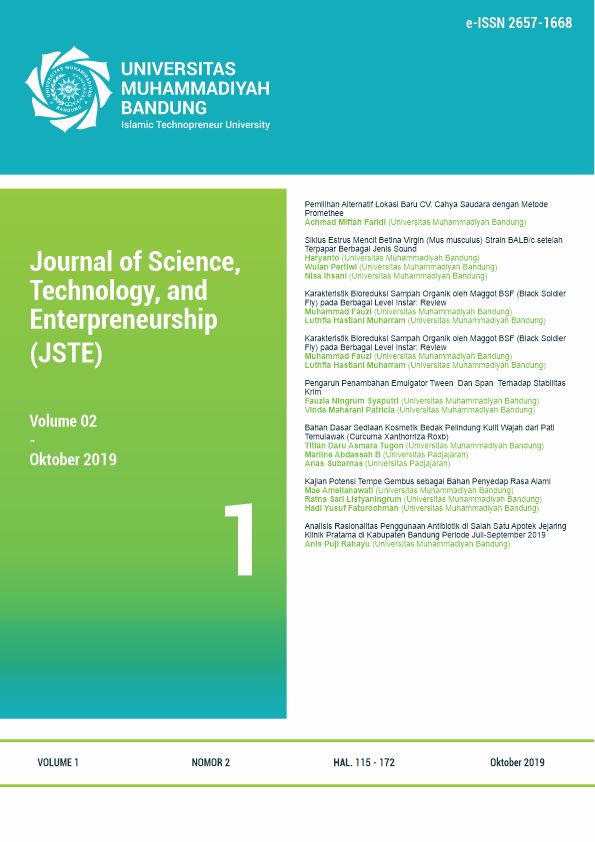Kajian Potensi Tempe Gembus sebagai Bahan Penyedap Rasa Alami
Kata Kunci:
tofu dregs, tempe gembus, glutamic acid, weetened tempeh flour, flavoringAbstrak
Tempe gembus is one of the traditional foods which is the result of fermented tofu by Rhizopus sp. Tempe gembus is marketed at a low price, this is probably because the tempe gembus is the result of waste treatment which is still considered of low quality. Therefore, one way to increase its economic value, gembe tempe can be made gembus flour which has high glutamate value so that it has the potential to become a flavoring ingredient. Tempe gembus which produces the most optimal levels of glutamic acid is fermentation time of 3 days, with a value of glutamic acid 38133.75 mg / Kg. Shepherd tempe flour which is dried at 70 ?C has good organoleptic acceptance value and proximate content as follows: moisture content 4.35%, ash content 2.89%, fat content 4.32%, fiber content 8.12%, content protein 8.03%, starch content 69.47% and glutamic acid levels 2898.27 mg / Kg.
Referensi
M. D. P. T. Gunawan-Puteri, T. R. Hassanein, E. K. Prabawati, C. H. Wijaya, and A. N. Mutukumira, “Sensory Characteristics of Seasoning Powders from Overripe Tempeh, a Solid State Fermented Soybean,” Procedia Chem., vol. 14, pp. 263–269, 2015.
Y. Prasetyaningsih, M. Wardati, and N. Ekawandani, “Pengaruh Suhu Pengeringan dan Laju Alir Udara terhadap Analisis Proksimat Penyedap Rasa Alami Berbahan Dasar Jamur untuk Aplikasi Makanan Sehat ( Batagor ),” vol. 15, no. 2, pp. 41–47, 2018.
H. N. Lioe, J. Selamat, and M. Yasuda, “Soy sauce and its umami taste: A link from the past to current situation,” J. Food Sci., vol. 75, no. 3, 2010.
M. Setyiasi, P. Ardiningsih, and R. Nofiani, “ANALISIS ORGANOLEPTIK PRODUK BUBUK PENYEDAP RASA ALAMI DARI EKSTRAK DAUN SANSAKNG ( Pycnarrhena cauliflora Diels ),” Jkk, vol. 2, no. 1, pp. 65–69, 2013.
AOAC, Official methods of analysis of the Association of Official Analytical Chemists International. 2011.
Sarwono.2005. Membuat Tempe dan Oncom Cetakan 29. Jakarta: Penebar Swadaya





